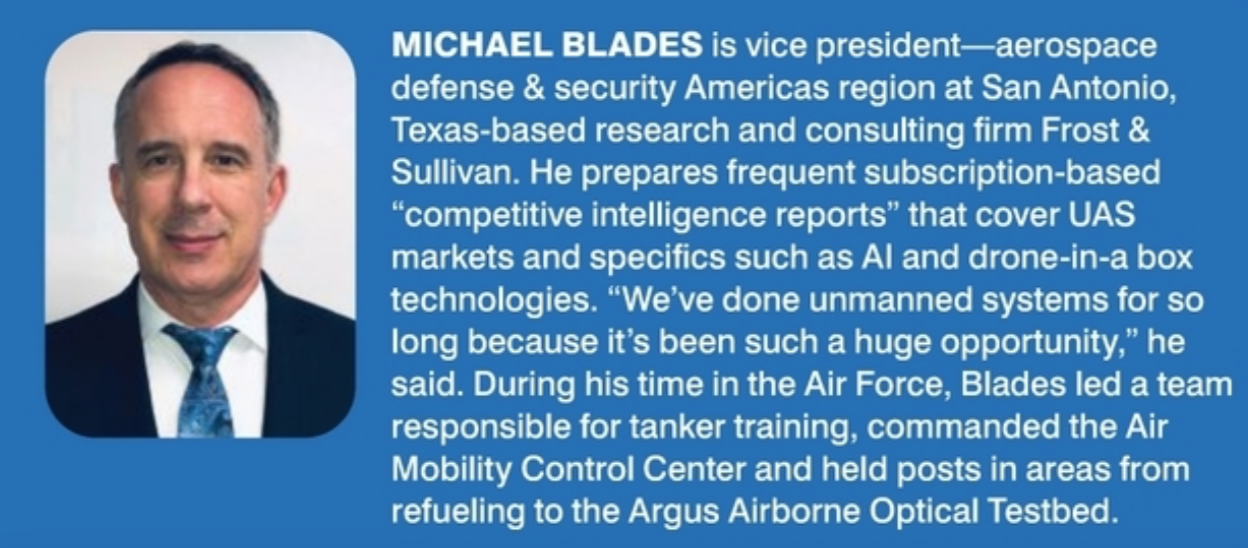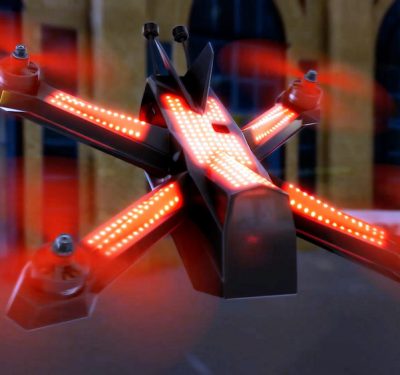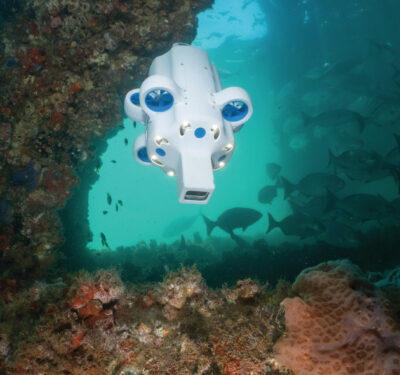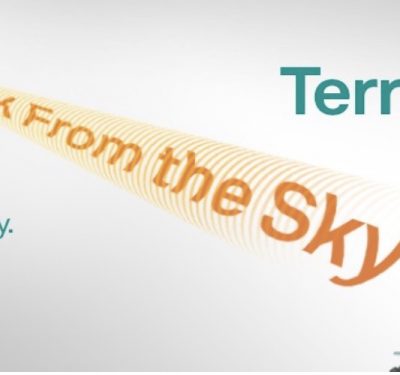
Q: What key UAS technology trends have you been seeing?
A: Autonomy and AI are the two things we see really driving the markets. Autonomy—cost savings and cost efficiencies when it comes to unmanned systems by not having to pay a person to do a job. AI–what we call “time to data”—identifying the data you need and filtering out what you don’t makes everything faster and more precise.
Q: What about more specific technologies?
A: There’s cool technology in all the sensor areas. Advancements in LiDARs to not only where they’re more capable but also cheaper, and that’s a big deal because EVs need a lot around the vehicle to be autonomous. Visual sensors are getting very, very good—companies are working on camera-based systems for sense and avoid. As for batteries, that’s the Shangri-La: if an all-electric aircraft can take people back and forth, that’s where you’re going to be able to make all your money. But you’ll need higher battery energy densities to get there, though the technology is advancing. And it’s not just the battery energy; batteries can have thermal runaway and burn up, so how do you contain that?
Q: What do your findings suggest concerning advanced/unmanned traffic management?
A: We think the opportunity now is in cargo. There aren’t people on board, and cargo is normally going from the same spot to the same spot, so it’s much easier to get waivers—a lot of that is probably not going to be in urban environments. We think things like Sabrewing and Elroy Air will drive revenue first with cargo and the passenger stuff will come in later, when the technologies have advanced and been tested more, and there’s more structure within how urban or low altitude traffic management is going to work. So, outside of the urban area and cargo first, we think.
Q: What are some of the challenges around AAM/UTM?
A: The biggest involve integrating small and large autonomous aircraft into the National Airspace System, but also at low altitude, because that’s where all your uncooperative aircraft are going to be, like a farmer with a Cessna. And with unmanned traffic management, how’s that going to work and who’s going to pay for it? Another one is detect and avoid. You’re going to have to see oncoming traffic at a certain distance and react. They’re not necessitating any [particular] kind of sensor, as long as you meet those restrictions. But the more complex you get, the more complex the standards get.
Q: What interesting concepts are you noticing that might be scalable?
A: That PteroDynamics design [a folding-wing, long-range VTOL] really interests me. They are licensing the technology, and they say they can scale up at any size, up to an air taxi. And you don’t have a huge footprint on the ground.
The other interesting one, to me, involves hydrogen power [such as the Skai eVTOL]. Europe is really focusing on hydrogen for aerospace operations. Overall the trend is going green, and with electricity you’re still burning fossil fuels to charge it. Hydrogen is really the only true green resource out there right now until we get some sort of massive renewable infrastructure with solar and wind.






